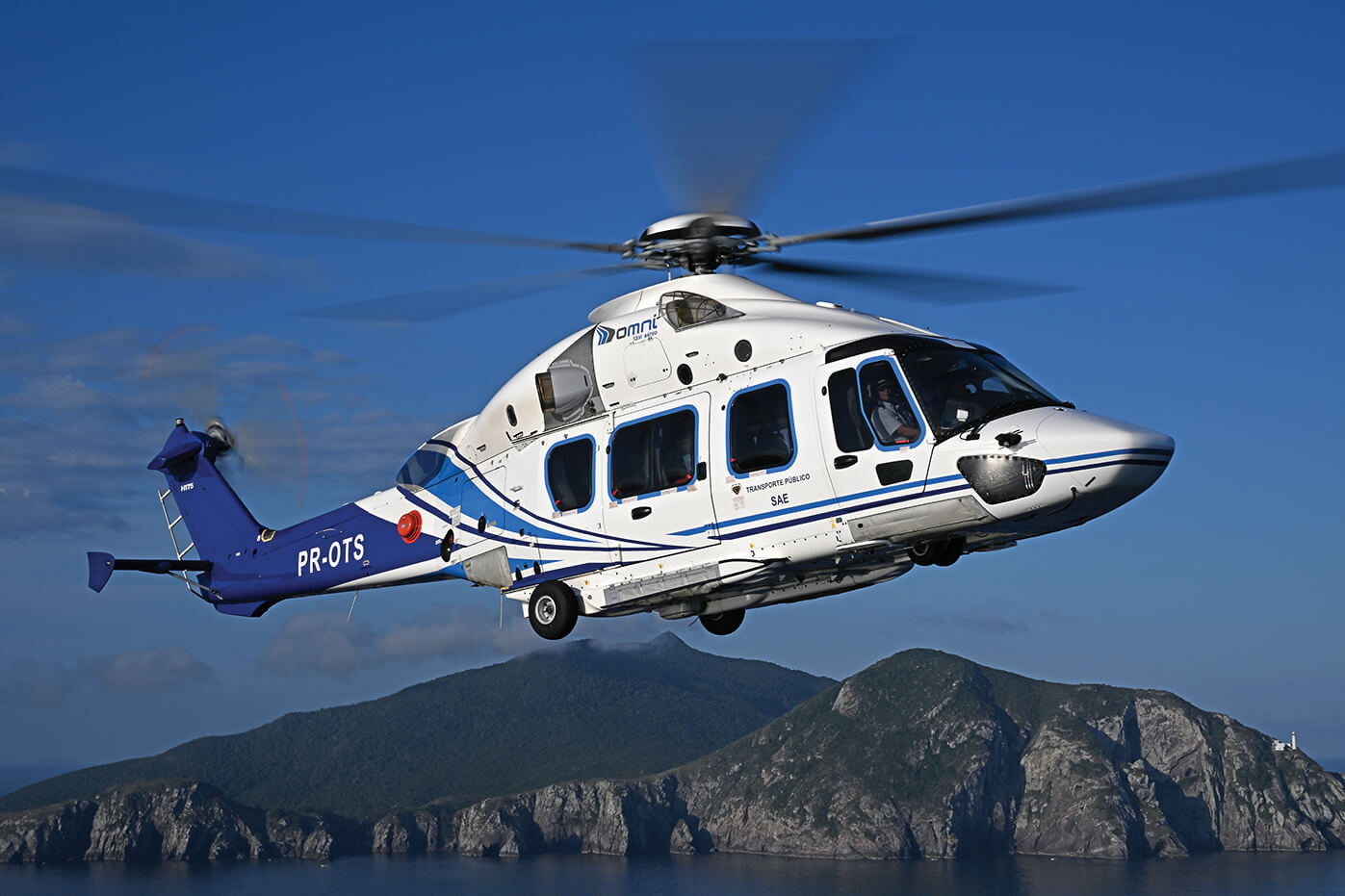Airbus Helicopters said it is seeing surging market demand for its super medium H175, fueled by the return of the offshore oil-and-gas market — and the difficulty some operators are having in supporting their Sikorsky S-92s.
“Their ability to maintain the aircraft has pushed the operators to reconsider the S-92 for oil-and-gas operation,” Jerome Fagot, head of the H175 program, told journalists at a pre-Heli-Expo briefing. “They are clearly engaged in S-92 replacement, and that’s an opportunity for the super medium helicopter market.”
Airbus took orders for 14 H175s last year, but Fagot said that this doesn’t tell the full story of the market rebound for the super medium. The manufacturer has also signed framework agreements with several operators that cover more than 50 aircraft, he said. Almost half of those were added over the last year.
These agreements provide operators flexibility in terms of when they take delivery of aircraft, while providing Airbus with greater visibility of market demand over the next four or five years.
“The market is there, the demand is there, and now our ability to provide slots is clearly the main challenge if we want to capture the market,” said Fagot.
Airbus is aiming for a fourfold increase in output by 2026, but Fagot didn’t disclose the current production rate.
“As you can imagine, the most tricky thing is that we need to secure the supply chain,” he said. “It’s not only the traditional European supply chain, it is also our Chinese partners.”
The industrial lead time for a basic oil-and-gas aircraft is 12 months, and 18 to 24 months for a search-and-rescue configured aircraft.
“But then it’s a matter of [finding available] slots,” said Fagot.
The global H175 fleet — 56 aircraft — recorded 40,000 flight hours in 2023, taking the total fleet flight hours to over 210,000 since the type entered service in 2014.
A maturity plan launched five years ago has resulted in an availability rate of above 95 percent today, Fagot said, reducing the number of unscheduled maintenance events. The company approved a main gearbox time between overhaul extension (from 1,600 to 2,400 flight hours) at the end of last year. Now, it is aiming to reduce the amount of hours taken to complete a 400-hour inspection by 25 percent, and an 800-hour inspection by 50 percent.
The H175 is still heavily dependent on the energy market — 72 percent of the fleet is working in that sector — and Fagot said he was keen to diversify with a greater spread between sectors, despite the oil-and-gas rebound.
“We have seen in the past that it was not necessarily good to be extremely dependent on one market segment,” he said. “We want to be resilient over time, and that’s why we want to increase our market share over public services, but also the PBA [private and business aviation] segment… and diversify our mission with the military market.”
Regarding the aircraft’s appeal to PBA customers, Fagot said the space of the cabin (12 passengers in VIP configuration), the noise, and the vibration level were all good selling points.
The militarized version of the type — the H175M — was launched last year, and Airbus is pitching it for the U.K.’s New Medium Helicopter (NMH) program, as well as an opportunity in Saudi Arabia. The type flew in the latter country as part of a hot and high demonstration last year, with temperatures reaching 45 C.
Airbus secured certification for the H175 from the Chinese regulator last year, and has initiated the certification process with the Federal Aviation Administration and Transport Canada to gain their approval for the type. The manufacturer is currently targeting 2025 and 2026, respectively, for these certifications.
Fagot said the manufacturer’s recent experience of pursuing FAA approval — for the H160 — is helping inform its approach with the H175. “We come with the lessons learned from the H160…. We do believe that we will be able to go faster — on both sides.”
Airbus currently has two H175s working on a deicing campaign — one in Canada and one in Norway. “Everything is working well,” Fagot said of the tests, which will likely continue into April.





